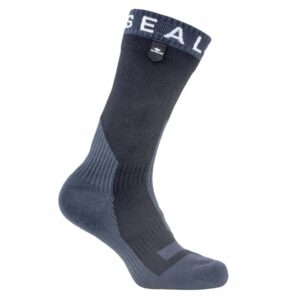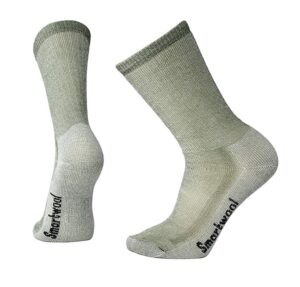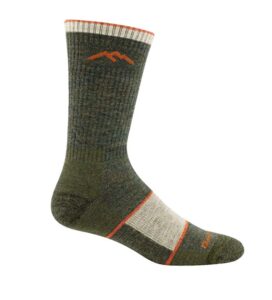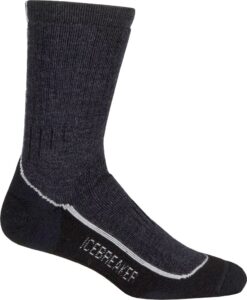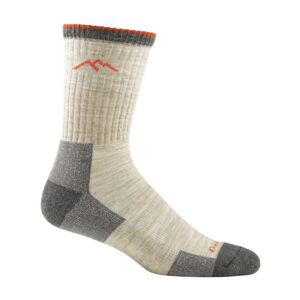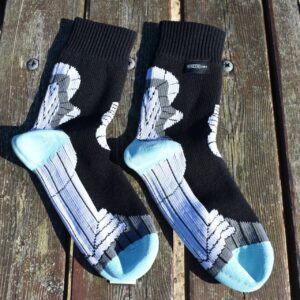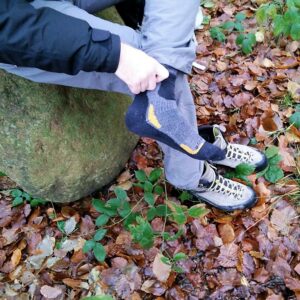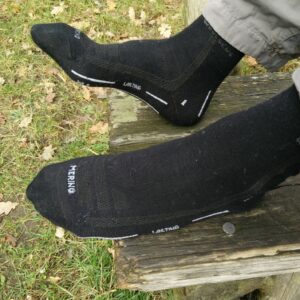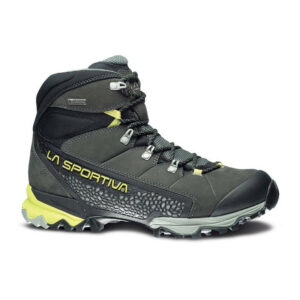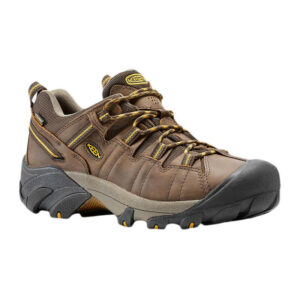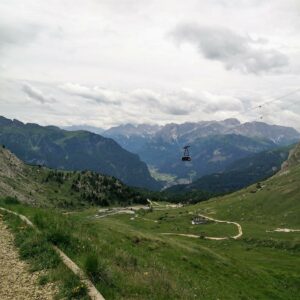Socks are among the most underrated pieces of hiking clothing – hikers often spend a lot of money on sophisticated shell layers, insulation layers etc. but when it comes to socks, they somehow become penny pinching. We, however, think that socks are very important as they are worn directly against the skin on your feet (which are doing most of the work when hiking) and thus have big impact on your comfort.
High-quality hiking socks keep your feet warm, dry and blister-free. In this review we selected the best winter hiking socks currently available in order to make your buying decision easier. We only listed hiking socks that provide good performance.
Updated Content
We regularly update our reviews and selections to always recommend you the best products on the market.
Expert Selections
We only list top-tier products. Read how our selections of best hiking products differ from others here.
Links
We use affiliate links and may receive a small commission on purchases at no extra cost to you.
1. Our Picks of Winter Hiking Socks
- Smartwool Medium Hiking Crew
- SealSkinz Trekking Thick Mid
- Falke TK2
- Darn Tough Hiker Boot Full-Cushion
- Icebreaker Hike Heavy Crew
2. The Selection
1. Smartwool Medium Hiking Crew
Suitable for:
- Hiking
- Mountaineering
- Trekking
- Walking
- Backpacking
Material: 66% Merino Wool, 33% Nylon, 1% Elastane
The Smartwool Medium Hiking Crew socks are very comfortable and perfect for use in winter. However, as they offer great temperature regulation they can also be used in other seasons. The socks are made of a blend of Merino wool, nylon and elastane and therefore offer great breathability, moisture-wicking properties and anti-odor performance. The breathability is additionally enhanced with strategically placed mesh ventilation zones. They feature the 4 Degree Elite Fit System which ensures great stretch and recovery performance. The durability of the socks is increased with ReliaWool which is included on high impact areas. The Smartwool Medium Hiking Crew socks are perfect for hikers and mountaineers who want to keep their feet comfortable on physically demanding adventures.
Pros:
- Comfortable
- Durable
Cons:
- Price
Where to buy?
Also available at:
2. SealSkinz Trekking Thick Mid
Suitable for:
- Hiking
- Mountaineering
- Trekking
- Walking
- Backpacking
- Everyday use in wet conditions
Material:
Inner layer: 41% Merino Wool, 41% Acrylic, 14% Polyester, 2% Nylon, 2% Elastane
Hydrophilic Membrane
Outer layer: 90% Nylon, 10% Elastane
The SealSkinz Trekking Thick Mid socks differ from other socks in this review by being waterproof. You may ask yourself why you need waterproof socks. The answer is that at some point even the best waterproof boots leak and therefore it is good to have a backup. The SealSkinz Trekking Thick Mid socks are made of 3 layers; an abrasion-resistant synthetic outer layer, a hydrophilic membrane and a comfortable inner layer made of antimicrobial Merino wool. The hydrophilic membrane is very thin and flexible and thus does not cause any discomfort while efficiently protecting your feet against water and wind. The socks have elastic ankles for better fit. The SealSkinz Trekking Thick Mid socks are best for those who often hike in wet and cold conditions.
Pros:
- Waterproof
- Windproof
- Breathable
Cons:
- Stiffer than other socks
3. Falke TK2
Suitable for:
- Hiking
- Mountaineering
- Trekking
- Walking
- Backpacking
Material: 40% Polypropylene, 28% Polyacrylic, 22% Wool, 9% Polyamide, 1% Elastane
The Falke TK2 socks are a little thinner than the socks from SealSkinz and SmartWool, but combined with the right footwear they provide enough warmth for winter hiking. As they are made out of synthetic materials only, they dry very fast and absorb very little moisture. For increased comfort, the socks have cushioned footbeds and toe cushioning. In addition to that, they are equipped with elastic ankles for better fit. The Falke TK2 socks are best for those who want a pair of relatively inexpensive socks for hiking, mountaineering or any other outdoor activity.
Pros:
- Comfort
- Quick drying
Cons:
- Odor prone
4. Darn Tough Hiker Boot Full-Cushion
Suitable for:
- Hiking
- Mountaineering
- Trekking
- Walking
- Backpacking
Material: 69% Merino Wool, 27% Nylon, 4% Lycra® Spandex
The Darn Tough Hiker Boot Full-Cushion socks are made of a blend of Merino wool and synthetic materials for increased durability. As the percentage of Merino wool in the blend is relatively high, the socks provide great temperature regulation as well as an excellent moisture-wicking performance. The socks are what Darn Tough calls True Seamless, which means that there is an undetectable seam fusion for a smooth unspoiled feel. As the name implies, the Darn Tough Hiker Boot Full-Cushion socks feature high density cushioning throughout the entire sock for extra comfort and performance – especially for long hiking trips and/or carrying a heavy backpack.
Pros:
- Warmth
- Price
Cons:
- /
Where to buy?
Also available at:
5. Icebreaker Hike Heavy Crew
Suitable for:
- Hiking
- Mountaineering
- Trekking
- Walking
- Backpacking
Material: 69% Merino Wool, 28% Nylon, 3% Lycra
The Icebreaker Hike Heavy Crew socks have a high content of Merino wool fibers and are thus very comfortable. They are breathable and moisture-wicking. In addition to that, they also excel at temperature regulation. The Icebreaker socks are equipped with stretch panels in ankle area and feature anatomical fit. As the Icebreaker Hike Heavy Crew socks provide superb comfort and odor-control, they are best for those who often do long and demanding hiking trips.
Pros:
- Comfort
Cons:
- Price
Where to buy?
Also available at:
3. Winter Hiking Socks Buying Advice – What is important?
Comfort
Hiking socks should be breathable, quick drying, and moisture-wicking. They should also provide good temperature regulation. Your feet shouldn’t be too warm or too cold. If your feet are too warm, they will get sweaty and moist skin is more prone to blisters. On the other hand, you will definitely not have a pleasant hiking experience if your feet are too cold. The temperature regulation, breathability and moisture-wicking performance of a pair of socks depend on the quality of the fabric.
Material
Socks are usually made of synthetic materials (nylon, elastane), blends of natural and synthetic materials (Merino wool and nylon) or purely natural materials (cotton).
Synthetic Winter Socks
Socks made of synthetic materials are known for absorbing very little moisture and thus dry a lot faster than other socks (cotton, Merino wool). The main downside of synthetic socks is that they offer poor antimicrobial performance – they quickly become smelly.
Merino Wool Socks
When it comes to socks, Merino wool is always mixed with nylon or other synthetic fabrics as Merino wool itself is not strong enough to withstand the constant abrasion against the inside of your footwear. Socks that contain a high percentage of Merino wool are known for being very breathable and for having a great moisture-wicking performance. In addition to that, they also retain warmth even when wet – unlike socks in other materials. For more information about Merino wool, check out Why you should wear Merino wool clothing.
Cotton Socks:
Socks made of cotton are not suitable for hiking (or any other sport activity) as they absorb too much moisture and thus tend to cause blisters and conductive heat loss – for more information check out Why is cotton bad for hiking.
Cushioning
Socks with high amount of underfoot cushioning are best for technical trails and socks with less cushioning are a great option for easy trails. Winter socks typically have more cushioning than summer socks because they are thicker to provide more warmth. Therefore, they are also very comfortable to wear.
Fit
A well-fitted sock is comfortable to wear and less likely to cause blisters. Socks are made of stretchy materials and typically fit well if you get them in the right size. However, you should also make sure they fit nicely with your hiking shoes or boots. For example, thick socks might make your boots feel too small.
Durability
Socks do take a beating on hiking trails and thus it’s important that they are made of robust materials. Robust materials ensure long lifespan of the socks. Synthetic socks provide better durability than Merino socks. Read more about the durability of Merino wool in our article How durable is Merino wool. Hiking socks should also withstand regular washing without changing their shape or performance.
4. Questions and Answers
What kind of socks to wear in winter?
We recommend wearing socks made either of synthetic materials (polyester, nylon etc.) or Merino socks. These materials are moisture-wicking and quick-drying. Note that wet socks make your feet cold very fast since the thermal conductivity of water is much higher than the thermal conductivity of air. You should thus avoid cotton socks in winter because cotton socks dry slowly and absorb a lot of moisture.
What is the warmest sock material?
The warmth of socks depends more on the thickness of fabric than on the actual material. However, the material should be moisture-wicking and quick-drying as wet socks make you feet cold rapidly.
